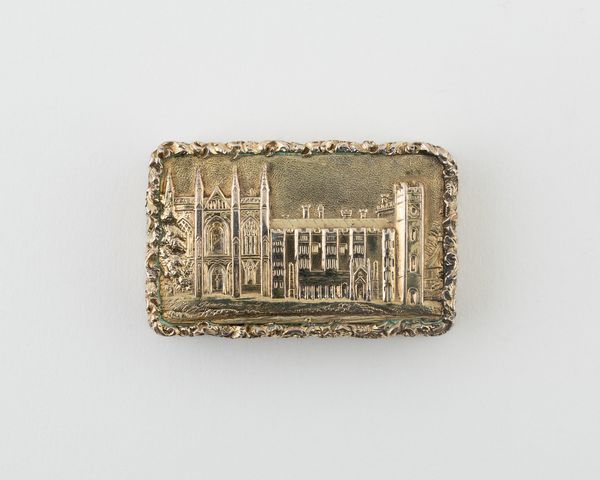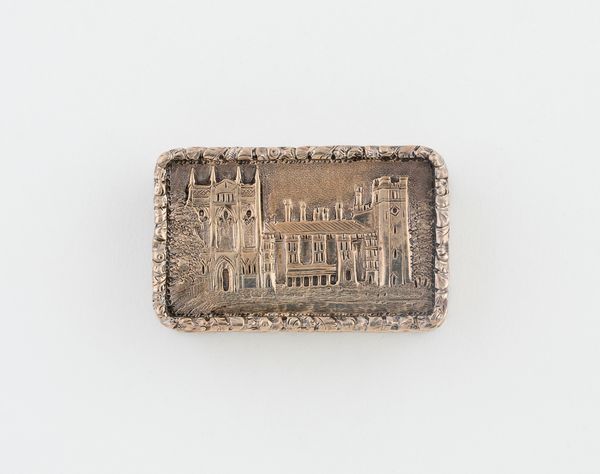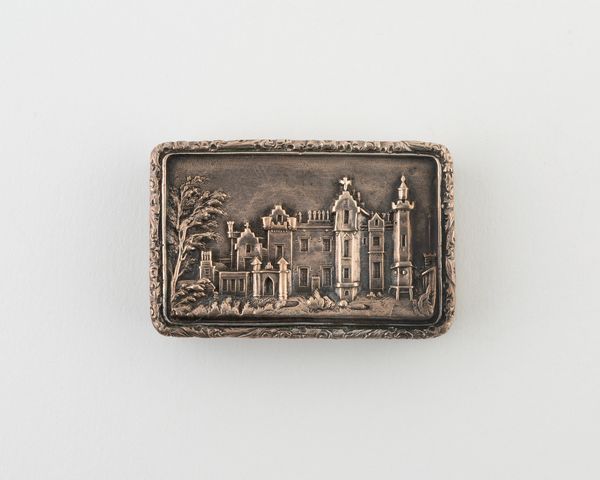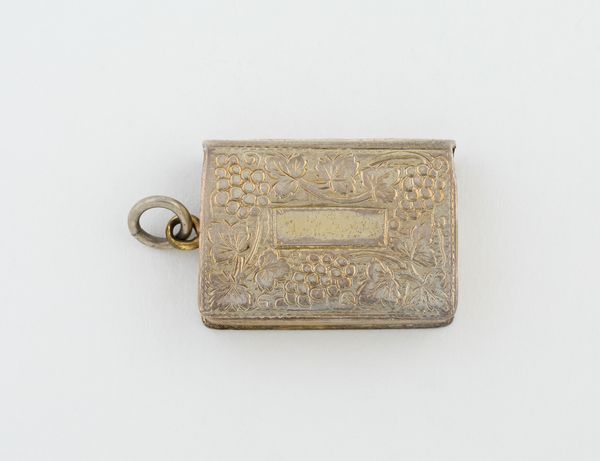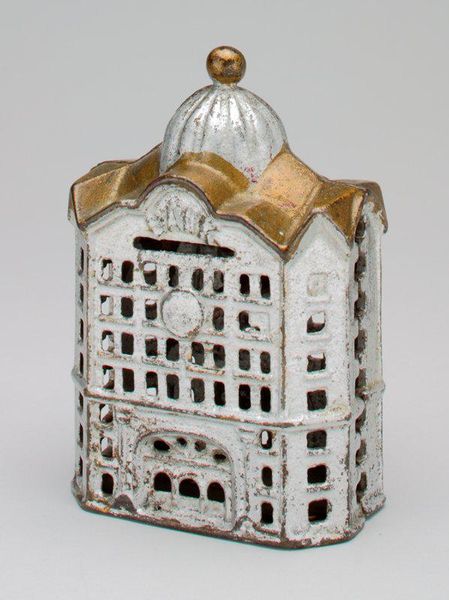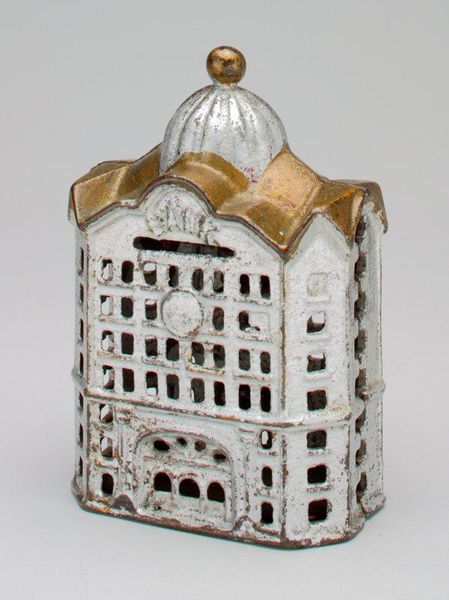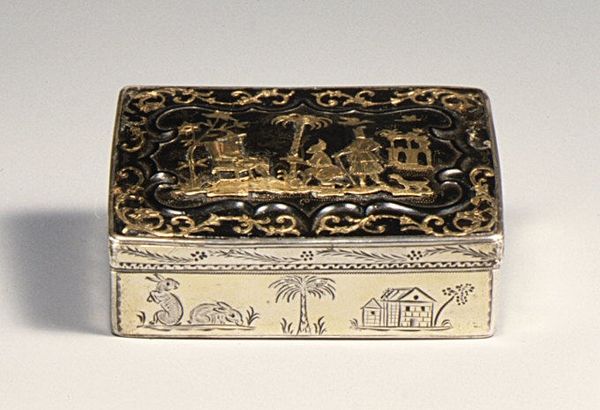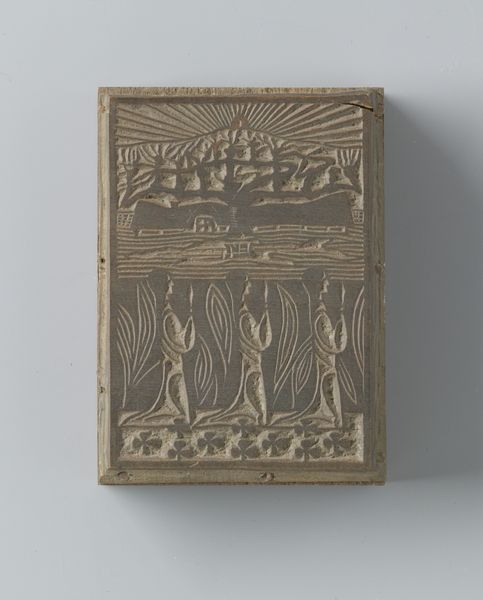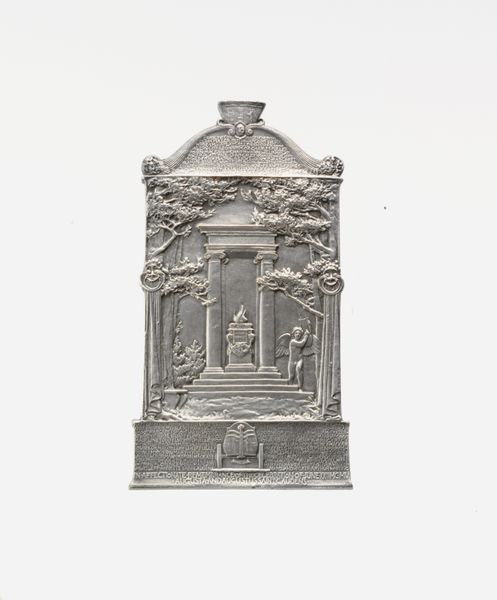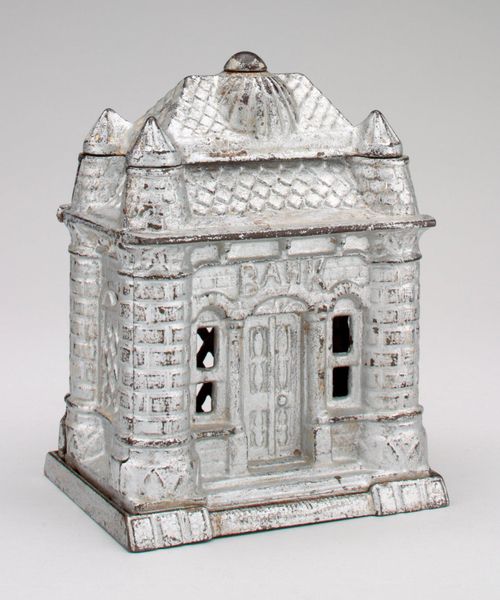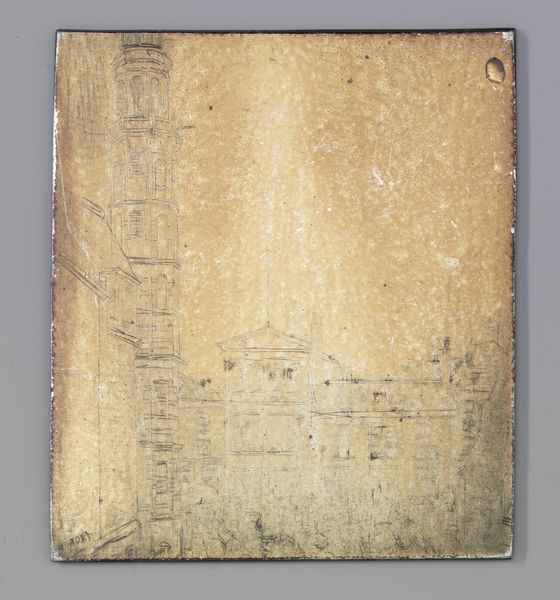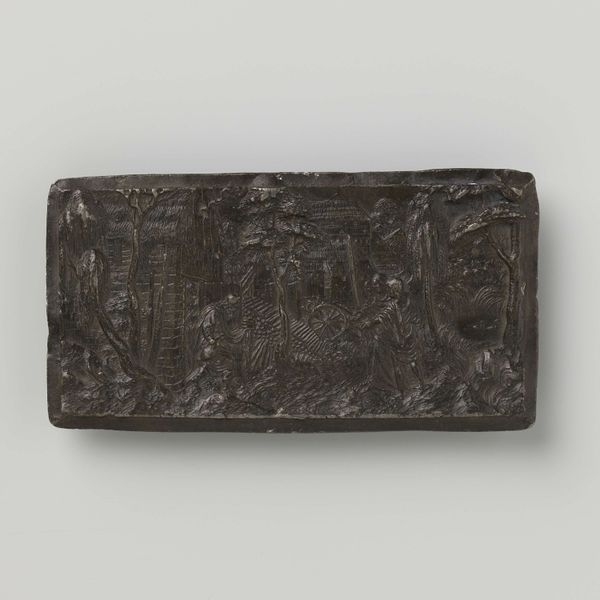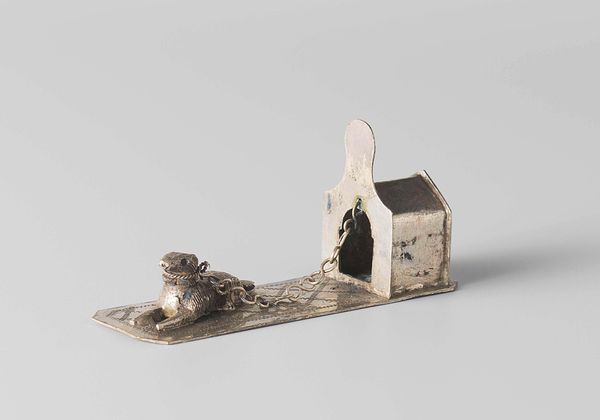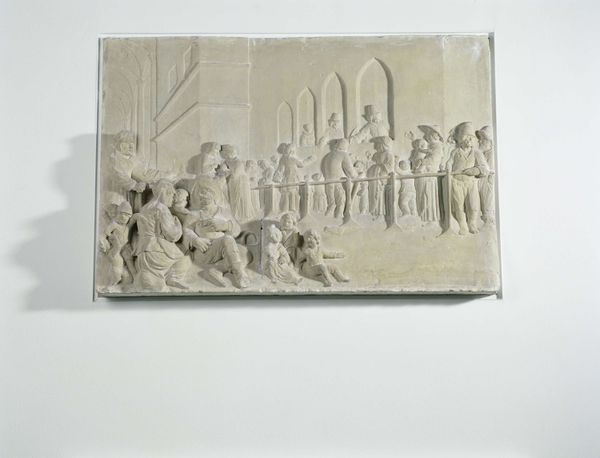
silver, relief, engraving, architecture
#
silver
#
relief
#
decorative-art
#
engraving
#
architecture
Dimensions: 4.5 × 3.2 cm (1 3/4 × 1 1/4 in.)
Copyright: Public Domain
Editor: So, this Vinaigrette with View of Ely Cathedral, made around 1839-1840 by Taylor and Perry, is crafted from silver and features an engraving in relief. It's so intricate, and almost feels like a tiny, portable monument. What stands out to you when you look at it? Curator: I see a confluence of power dynamics reflected in this object. The cathedral, an emblem of religious and societal authority, is miniaturized and contained within a personal, decorative item. How does the reduction of such a grand structure into something so intimately held change its meaning, and for whom? Editor: That's interesting. I hadn't considered the power dynamic. So, you're saying that turning this huge cathedral into something pocket-sized, made from precious metal, is somehow about power? Curator: Absolutely. The Victorian era saw the rise of industrial capitalism and burgeoning class structures. The wealthy classes commissioned pieces like this to assert their dominance. What does it signify to literally carry around a symbol of established power like a church? Does it hint at a co-opting of that power, a control over it? And conversely, what is absent in this ownership – who is excluded, who perhaps, built that cathedral? Editor: Wow, I see your point. It's not just a pretty trinket; it's loaded with historical context about class, access, and who gets to own symbols of authority. Curator: Precisely! Consider the vinaigrette's function—holding perfume-soaked sponges to ward off unpleasant odors in a polluted urban environment. Does this speak to privilege, the ability to literally shield oneself from the realities faced by the working class living in squalor nearby the same impressive structures? It provokes a re-framing from pure artistry into an active participation of existing disparity. Editor: I never thought about it that way. I guess objects like this hold more than just beauty; they tell stories about social hierarchies and power. I appreciate the fresh eyes on it, seeing how decorative art becomes intertwined with the history and culture that shapes it. Curator: And that's what makes engaging with art so fulfilling—uncovering those hidden narratives and confronting uncomfortable truths about the past. Hopefully sparking some activism and progressive movements going forward.
Comments
No comments
Be the first to comment and join the conversation on the ultimate creative platform.
